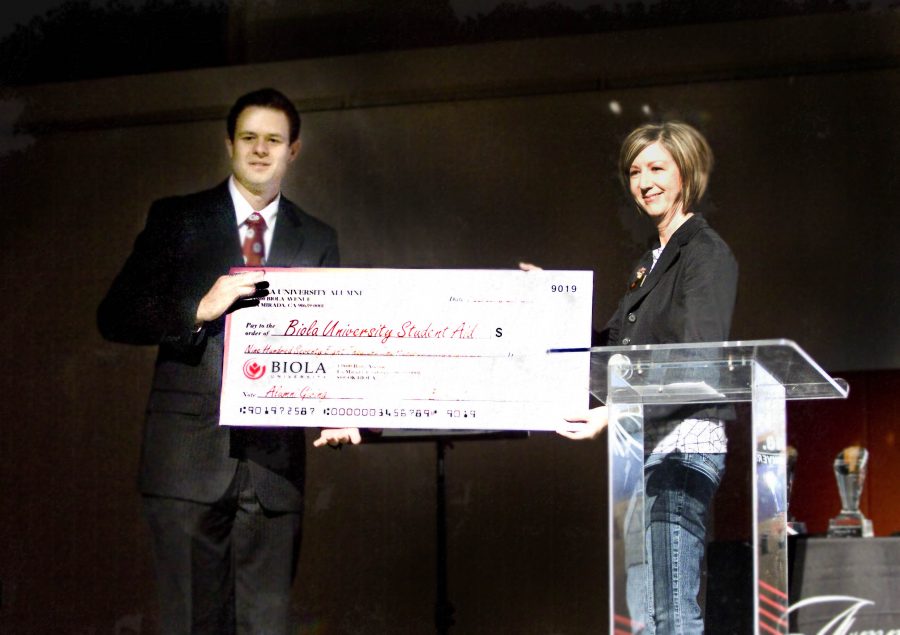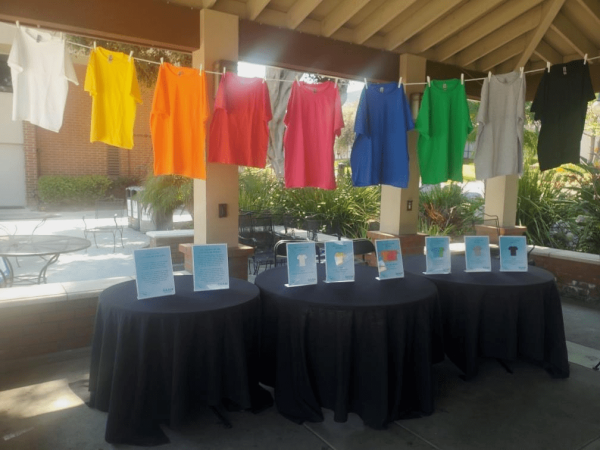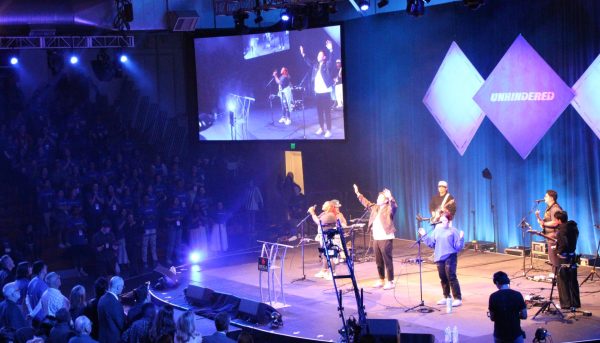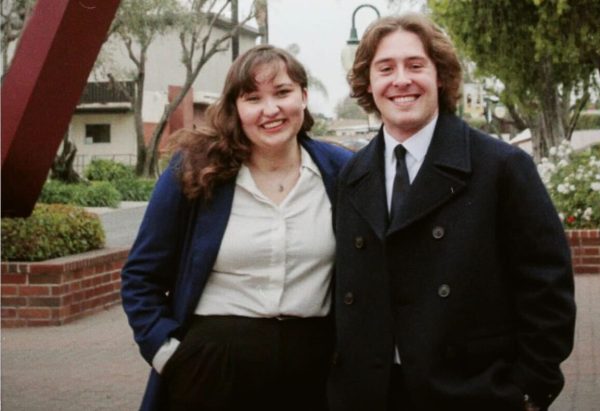Biola’s alumni giving up, but still lags behind
While Biola’s alumni giving has recently surged amid the staggering economy, the percentage of alumni who donate back to their alma mater is still relatively low compared to many larger or well-known universities.
AS President Eric Weaver accepts a $978,168.89 check from Alumni giving for the student body during the Alumni Chapel on Friday, Feb. 20. The funds will be used for scholarships. Photo by Kelsey Heng
March 5, 2009
While Biola’s alumni giving has recently surged amid the staggering economy, the percentage of alumni who donate back to their alma mater is still relatively low compared to many larger or well-known universities.
Dollar amounts aside, numerous colleges in the nation surpass Biola in the mere proportion of alumni who actually give out of the total alumni. While the average percentage of alumni who give back to Biola varies slightly from year to year, it has typically hovered around 8 percent, said Steve Smith, director of the annual fund and development communications for Alumni Relations.
High alumni giving rates often accompany prestige. At 60 percent, Princeton has the highest alumni giving rate, easily topping Yale’s 43 percent and Harvard’s 41 percent, according to the August 2008 edition of US News America’s Best Colleges. Behind them were schools like Stanford at 36 percent and UCLA at 14 percent.
Biola isn’t unique in its low alumni giving rates. Christian universities of a similar size face the same issue, Smith said. At Cal Baptist, alumni giving rates averaged only 4.3 percent for 2007, according to U.S News and World Report. Point Loma Nazarene University’s typical alumni giving rate is between 10 and 15 percent, said Lindsay Westfall from the school’s Alumni Relations office. For 2007, Point Loma’s average alumni giving rate lingered at 13.6 percent.
At 11.6 percent, Vanguard University’s alumni giving rate for 2007 was similar to Biola’s current rate, according to U.S. News and World Report. With an average alumni giving rate of 8.6 percent for 2007, however, Biola was still behind most of its peer schools.
Although determining the cause for this striking contrast is “an imprecise science at best,” Smith maintained that the reasons are primarily twofold. First, schools with more prestige have longer histories of graduating students who earn lucrative salaries after college.
“When you’re talking about the Ivys, you’ve got schools with hundreds and hundreds of years of history and heritage. So you do have a certain intangible that is maybe a little harder to define, but it’s just not going to exist with smaller [schools], especially smaller private Christian schools, that are much younger.”
Biola, on the other hand, has a long history of launching pastors and missionaries, who are themselves in need of financial support, he said. Hence, Biola graduates have traditionally had less cash to spare than graduates from secular universities. As Biola continues to expand departments like nursing and business, which have a greater potential to produce alumni who generate more financial resources, this may begin to change.
Also, alumni commitment to contributing to their own churches and other humanitarian projects often trumps commitment to donating to Biola. This may seem slightly counter-intuitive, as Christians are supposed to be charitable and generous, but alumni have their priorities straight, Smith said.
“The alma mater can fall down the list of priorities quite a ways. By all means, we don’t want to replace your church giving. We don’t want to replace your social giving. And yet, we have our own financial needs that we have to try to balance as well.”
One potentially misleading factor in alumni contribution percentages is the lack of uniformity in the methods schools use to measure their alumni giving base, Smith added. It’s possible for universities to only mail letters requesting donations to alumni who typically respond, then cite this selected group as their total alumni body. Biola, however non-discriminately sends letters to its total pool of alumni – including those who don’t usually give – at least once a year, and calculates percentages from this total pool. As a result, the alumni giving rate of Biola and other schools who abide by this method suffers, Smith said.
Publications like the Wall Street Journal and Chronicle of Philanthropy have investigated the suspicion that some universities may skew data to boost their ranking in U.S. News and World Report, in which alumni contributions constitute 5 percent of the total grade weight.
However, there is good news on Biola’s alumni giving front. The current flailing economy has actually boosted donor generosity. Alumni giving is now between 11 and 12 percent, notably higher than the average 8 percent, Smith confirmed. Biola has gained about 450 more donors than the 2,250 or so it had this time last year, a 20 percent increase. Also, 75 percent of the $2.31-million goal for the Biola Fund (where most alumni donations go) had already been raised by the beginning of March, putting the fund 3 percent ahead of where it was last year.
Alumni at UCLA “know that now more than ever, their gifts are critical” and are continuing to give generously, said Phil Hampton, a spokesman for the university.
Most universities haven’t been so fortunate. The New York Times reported last month that contributions to colleges in general — including but not limited to alumni donations — have fallen significantly since their record-high levels in early 2008 because of the recession.







